I live in Southern California and believe it or not we have miles and miles of beaches here. So, naturally about 10 years ago, I started exploring the possibilities as a fisherman. After a few false starts and lots of fishing with little to no luck, I started searching for answers. I found all I needed and more at SCSurffishing.com. I’ve been a member now for over a decade and I can tell you with certainty, it’s one of the greatest resources on the internet for fishing information, period. Although the main focus is surf fishing in Southern California, the member base reaches coast to coast and includes all types of information, from off shore Tuna in Mexico to ice fishing for Pike in Canada. What’s more is that there is a core group of members that are some of the coolest and friendliest people that you could ever meet (and one or two schmucks). If you have any interest in surf fishing it is the place to start.
That said, I’ll give you my two cents here as well. I can give you the basics, but there are some seriously great fisherman on SCSurffishing.com that have provided in depth articles on advanced technique that you definitely need to look at as well.
Okay, so first things first.
What kind of rod and reel will you need?
 My setup is a Pflueger President spinning reel paired with a Shimano Clarus 7’6” medium power fast action rod, rated for 6-12lb line. Many people prefer an 8’-9’ rod, medium – light power, with fast action. I agree with this sentiment too. I use the rod that I do for slightly more versatility (I use it for Spotted Bay Bass too), but a longer rod gets your bait out past the breakers and a lighter rod makes for a better fight with smaller fish like Surf Perch. Brands of rods and reels vary greatly in quality and price. There are definitely advantages to high quality gear, but you don’t need to spend a fortune to get into surf fishing. My rod and real combo costs less than $150. For line, I like PLine Floro Clear in 6#. Not everyone likes fluoro as a main line due to its stiffness, but it doesn’t bother me. Line tends to be a very personal preference, but you’ll want somewhere from 4#-12#. I think 4# is too lite as kelp stringers can easily break you off and over 8# is unnecessarily heavy. I’ve caught a 25lb Bat Ray on 6#! (Note: It took 45 minutes to land).
My setup is a Pflueger President spinning reel paired with a Shimano Clarus 7’6” medium power fast action rod, rated for 6-12lb line. Many people prefer an 8’-9’ rod, medium – light power, with fast action. I agree with this sentiment too. I use the rod that I do for slightly more versatility (I use it for Spotted Bay Bass too), but a longer rod gets your bait out past the breakers and a lighter rod makes for a better fight with smaller fish like Surf Perch. Brands of rods and reels vary greatly in quality and price. There are definitely advantages to high quality gear, but you don’t need to spend a fortune to get into surf fishing. My rod and real combo costs less than $150. For line, I like PLine Floro Clear in 6#. Not everyone likes fluoro as a main line due to its stiffness, but it doesn’t bother me. Line tends to be a very personal preference, but you’ll want somewhere from 4#-12#. I think 4# is too lite as kelp stringers can easily break you off and over 8# is unnecessarily heavy. I’ve caught a 25lb Bat Ray on 6#! (Note: It took 45 minutes to land).
The set up I just mentioned is the preferred set up for those of us who like to walk the beach fan casting in search of schools of fish. I find this to be more productive than bait and wait fishing, but that may not be your style. If you’re into bait and wait by all means have at it. I’m no expert in this game, however the generally speaking these types of fisherman use a 10’ + rod with larger spinning reels and heavier line and weights. They tend to cast beyond the breakers using natural baits like squid strips and cut mackeral, then place their rods in a sand spike and wait for a bite. This can be productive for larger game like Bat Rays, Leopard Sharks, and Guitar Fish. For more check out the SCSurffishing.com site.
Others also favor fly fishing, which is just as productive as the previously mentioned techniques if not more so. I’m not a fly fisherman so I have little to offer on specifics. For more on this also visit SCSurffishing.com. One word of caution, fly fishing can be a bit difficult once the beach becomes crowded. People tend to be oblivious to you fishing and may not realize you have 25 yards of fly line moving backward and forward when you cast. Take extra caution so as to avoid hooking the dumber people of our species!
What to use for bait?
Just like any type of fishing, surf fishing bait depends on the target species and conditions. By far the most common bait used in the surf these days is Berkley Gulp Sand Worms in camo ( affectionately referred to as “Crack” ) or red color fished on a Carolina Rig (AKA C-Rig).

The Carolina Rig consists of a sliding egg sinker fished above a bead and swivel connected to a short 12”-36” leader ending with a J hook threaded through a 2”-4” piece of the sand worm.

The egg sinkers I use are from 1/8oz when there is little wind, current, or waves to 3/4oz when the wind and or water is moving fast. For the leader you’ll want a shorter 12” leader in large surf (over 4’ waves) and a longer 36” leader in small surf (under 4’ waves). Note: A long leader in large surf will get tangled into a huge cluster F*ck in no time flat! The technique is simply to cast just beyond the breakers as they crash and slowly wind in or wind in with an occasional small jerk of the rod tip. It’s important to time your cast so that it lands just behind the wave as it breaks. Fish tend to follow the wave in as they feed then return to the deeper water immediately after they find a meal. Also note that this technique can be utilized in as little as 6 inches of water and no further than 5 feet from the water line at times. Many fish are literally 5-10’ in front of you as you cast from the water line.
Other baits that can be fished on the C-Rig include: 1-2” curl tail grubs in Motor Oil Red Flake or Clear Red Flake colors, Sand Crabs, Ghost Shrimp, and Lug Worms also work well for most surf species, i.e. Barred Surf Perch, Yellowfin Croaker, Spotfin Croaker, Corbina, and more.

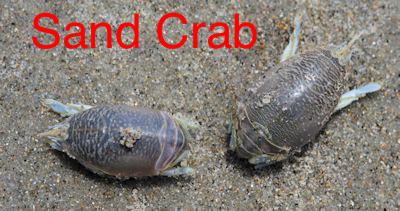
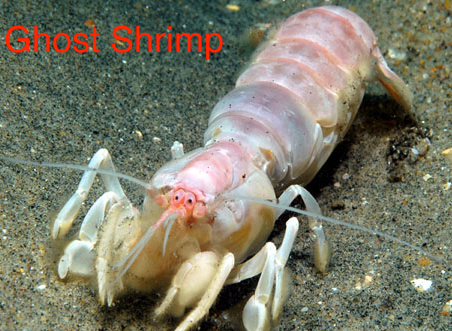

The second most successful bait seems to be the Lucky Craft Flash Minnow in Aurora Black (or other colors). This is the bait I usually fish first thing in the morning. It’s a little larger and tends to attract larger species, although surf perch will eat them too. The Flash Minnow is a suspending, 4 ½”, 5/8oz, Jerk Bait that dives 1-2’. It has great action and absolutely slays fish. This bait is especially popular for those fishermen targeting Halibut. Retrieve the Lucky Craft with a straight slow to moderate pace or with an occasional pause. Fish, especially Halibut will attack directly after the pause. Although it casts amazingly well for a Jerk Bait, it’s one down side is that it can be difficult to cast to outside breakers on windy days.

On Windy Days or if I need something that will cast a long way, I like to fish Kastmasters or Krocodiles up to 3/4oz in Blue and Chrome or Katmasters in Orange and Chrome. With both of these baits there is a specific speed of retrieve that you must practice to become familiar with. At a certain speed these baits begin to vibrate or wobble in the correct pattern. If when you retrieve these you are not feeling the vibration of the wobble, speed up or slow down until you find that sweet spot. These baits can be very effective, the Blue and Chrome for Halibut and Orange and Chrome for Yellowfin Croaker.
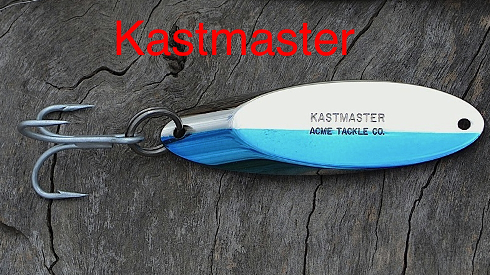
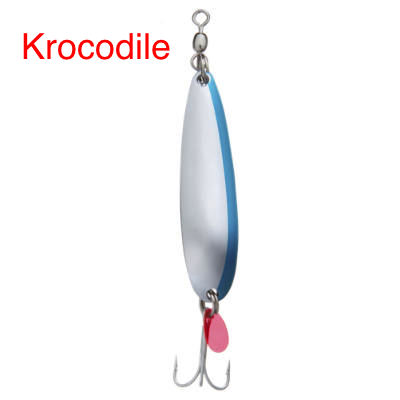
On days with smaller surf and less wind I like to fish 3” Big Hammer swimbaits. Typically I fish the #63 Bay Smelt color on a yellow lead head in ¼- ½ oz. I also like to add a bit of scent to the swimbait as fish tend to attack more aggressively and longer with it added. Retrieval of the swimbait can vary from very fast to very slow. You can implement a jerky retrieve or a wind pause technique. This is one of those things that is specific to the mood of the fish and how aggressive they are on a particular day. Fish that will hit a swimbait from the surf are typically Halibut and Calico Bass, though Croaker, Perch, and even Corbina will attack them as well.

When and Where to fish?
Fishing the surf in Socal can be productive just about anywhere. Some species are more abundant in some areas of the coast than others or grow larger in certain places than others. But, any beach you can get to will probably produce fish if try enough strategies. The main problem is there are miles and miles of beach and it all looks the same if you don’t know what to look for. Here are a few tips that will narrow down where you want to fish.
Looking out at the breaking waves it can look all the same. But, with an educated eye there can be a ton of fish attracting structure on any beach. If you see waves coming toward you and suddenly disappear into still water that has waves breaking on both sides of it, you’ve found a hole.

After big swells that pound the beach the moving water will carve out a hole like the one above. In these holes food such as sand crabs and clams collect for foragers like perch, Craoker, and Corbina. They’ll school in these holes until the tide swings, emptying them or filling them in making them too far from the surf zone. Other larger predators, particularly Halibut sit on the bottom and edges of holes waiting to ambush smaller prey. When I find a large hole I’ll work the edges from every direction with a Lucky Craft hoping for a big Halibut. If that doesn’t work I’ll switch to a C-Rig and Crack trying for Perch and Croaker. Make sure you give yourself every chance to catch a fish, as a hole is worth a mile of flat bottom beach.

Rip currents are the second feature you should be looking for on any stretch of sandy beach. A rip current is a channel that forms perpendicular to the beach. This channel acts as a river flowing out to sea. You will recognize it as there will be smaller waves in the rip current and it will be a different color than the water around it. Work the edges again with a Lucky craft. The same thing applies as with holes. There is often a Halibut sitting just inside the rip current waiting in ambush.

Troughs are another type of structure to be aware of. They form in the shallowest water where waves are breaking repeatedly in the same spot often just 5-10 feet from the water line. Troughs run parallel with the water line and trap sand crabs and other forage foods. This is the best place to find schools of perch. Cast parallel to the water line with a C-Rig and crack and work it back slowly. If there are perch in the area you’ll be bit in seconds.

Another form of structure is submerged rocks. You can locate these at low tide and fish them later when the tide fills in or find them at high tide as the water bubbles as waves pass over them. Halibut will lay on the bottom near these rocks waiting to ambush prey. Work every angle on these rocks with a swimbait to make sure your bait passes near the ambush point.
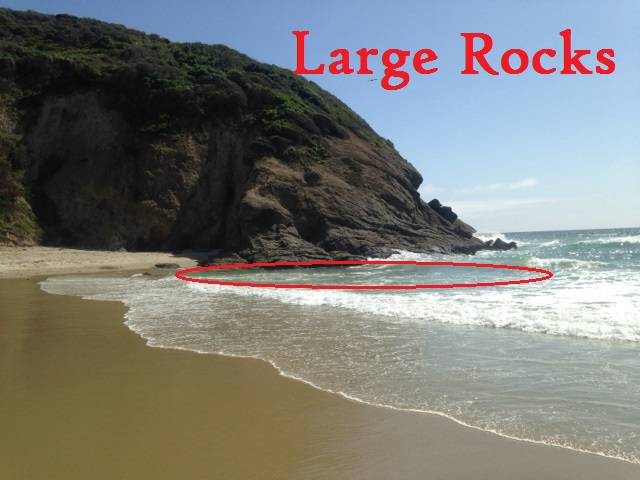
Bait fish and forage foods will stack up against barriers like large rocks and Jetties. They are a good place to find Perch, Croaker, and occasionally Corbina. They will also hold Calico Bass. I like to work these areas with a 3″ Big Hammer Swimbait in a Brown, Orange, or Red color with a 1/4- 1/2oz red lead head. These patterns mimic the red side winder crabs that inhabit these areas that are washed off the rocks by the surf and eaten by the Bass.
What are the right conditions for surf fishing?
This is sort of a nebulous question as the answer depends very much on the beach that you intend to fish. Some beaches fish best at low tide and some at high tide. Some beaches you can fish in large surf and others are impossible to fish in large surf. You have to take time to learn the best conditions for your favorite beach. Generally speaking I like to fish 3 hours before the peak of the high tide until it peaks. After the peak the bite tends to die off. For low tides I like to fish from the peak of the low to about 3 hours after. If these times align with dawn or dusk even better.
As for surf height, 3-4 foot waves tend to be the best to fish. Surf fish use the dirty churned up water as cover to hide from birds and other predators. If the waves are small there is a lack of churned up water and cover and the fish will swim in deeper water. On the other hand if waves are too large, it’s difficult hold the bottom with a C-Rig even with a heavy weight. Large waves also make it difficult to maintain proper speed and pattern with Lucky Crafts, Kastmasters, and Krocodiles.
Wind is the third factor that needs to be considered. A heavy on shore wind makes most baits impossible. If this is the case I’ll usually stick with a C-Rig with a 3/4oz weight as it’s the only game in town at that point. Cross winds can make casting long distances difficult too. Know the direction your beach faces and whether the wind will limit your options that day. Off shore winds are your friend. They increase your casting distance and put areas that are normally inaccessible in play. This is especially true for swimbaits and Lucky crafts that have limited casting distance.
Moon phase and time of day may or may not make a difference in productivity. Some people believe it does, others not so much. I like fishing dawn and dusk, but I haven’t noticed much difference between full or new moons except for the fact of larger tide swings during each.
There are a multitude of websites that will give you wave height, tide chart, wind direction and so forth. I surf so I tend to use Surfline.com. Here is a screen shot of their conditions page.

I also tend to utilize their live webcams as it gives you a glimpse of the conditions and you can see if the beach is filled with kelp and other salad.
What Will you catch?

The Barred Surf Perch is the most abundant surf species in California. The Typical size is 6-12″, but in Ventura and Santa Barbara Counties 13-15″ specimens aren’t uncommon with the maximum size being 17″ and 4lbs. These are very aggressive fish for their size and even the smaller ones will chomp on Lucky Craft when they’re hungry. However, most Perch are taken on a C-Rig fished with Gulp Sand Worms, a 1-2″ grub, or a small dime sized Sand Crab.

Yellowfin Croaker are plentiful in the Southern California Surf. Most are in the 12-16″ range with the maximum size being 21″ and 5.5lbs. Orange and Chrome Kastmasters fished in furthest to secondary breakers is very effective for these fish. However, they will eat Sand Crabs, Gulp Sand Worms, Lug Worms, Muscles, and Grubs fished on the Carolina Rig.

These Perch are less plentiful than Barred Surf Perch, but are just as feisty in spite of their smaller size. Typically these fish care caught on C-Rig and Gulp Sand Worm, as their mouths are a bit small for larger baits.

I have to be honest, I’ve been surf fishing for 10 years and still haven’t caught a Spotfin Croaker. My closest encounter came while snorkeling in Laguna Beach when a school passed under me in the surf line. These fish are tough and will pull drag. Most often caught with a C-Rig and Sand Crab. They are more plentiful South of the Border, but we still get quite a few in the reports up here. The IGFA record for this fish is almost 10lbs.

Corbina are one of the more elusive fish in the surf line. These fish will follow the waves in feeding on sand crabs in just a few inches of water. In spite of this, they are very difficult to hook. Easily spooked, using Lite line, Sand Crabs, and a ton of patience is key. There will be times when you see an entire school in the waves, but they want nothing to do with your bait. You can cast and recast right in their faces and they’ll laugh at you all day. The largest ever caught was nearly 8lbs.

Halibut are probably the best table fare in the surf (IMO), and one of the more difficult fish to catch a keeper (22″ in 2017). Again, I have to be honest, I’ve caught plenty of Halibut from the surf, never a keeper. Not that it’s impossible. There are guys who have their Halibut game dialed in and catch big ones regularly. These guys fish bait casters with longer 8’+ rods. They use the Lucky Craft Flash Minnow religiously and it pays off for them. They seem to catch the fish in very specific areas of the coast, which I’m not at liberty to divulge. The IGFA record is 67lbs caught at Santa Rosa Island.

Mackerel are abundant outside the breakers. They tend to be by catch and sometimes a nuisance. They tend to be used as bait for larger species like Bat Rays and Leopard Sharks.

Smelt are another by catch species in the surf zone. They make for very good Halibut bait.

Calico Bass can be caught in good numbers on beaches with a kelp line or good rocky structure. A very aggressive fish they tend to hit Swim baits and hardbaits. My go to color is “Red Calico Hunter” from Big Hammer with a 1/2 – 3/4oz red lead head. Calicos have rough teeth and 20# test line or heavier is necessary to land larger models. They also have a tendency to hang out in rocky crevices which they will dive directly back into once hooked. These fish are slow growing and there is a large push for conservation of them. Please practice catch and release.

Leopard sharks are very common in the surf zone. They are often caught with heavier gear cast toward the outer breakers. Common bait include squid, cut Mackerel, or small Barred Surf Perch. They can be up to 7′ long and weigh 40lbs.

Shovelnose Guitarfish (AKA Wiggles) are a common by catch when fishing for Bat Rays or Leopard Sharks. They will eat cut squid and Mackerel and occasionally your perch rig. Not a target species, though they can be fun on light line.

Bat Rays (AKA Mud Marlin) can be caught in the surf zone with a heavier set up. Some people fish them with 8-9′ heavy rods and large conventional reels with 80# or heavier line. Bat Rays make long unrelenting runs that will easily spool an under matched reel. Some of these beasts can weigh well over 150lbs with a wingspan of 6′.

Words of wisdom.
1- Never turn your back to the sea. Just because the waves were 1-2′ a minute ago doesn’t mean a 6′ sneaker set could pop up at any time. Always face the ocean when unhooking a fish or retying.
2- Be aware of the tide swings and surf forecast. Especially if you’re fishing on a rocky point, jetty, or sand bar. Don’t get trapped when a high tide comes in. It happens fast some times. Also, a swell can change from 2-3′ to 10′ in a very short time. I was fishing the Newport Jetty (The Wedge) on the harbor side when a was a rookie. I wasn’t paying attention and before I knew it the 15-20′ waves were crashing over the Jetty. I could have very easily gone for a swim that day. Remember, a couple of Perch aren’t worth your life.
3- Beware of the public. They can be dumb and blind and walk right into your line as you’re casting. Look behind you before you cast. Be courteous and fish far away from swimmers and surfers. We don’t want to be seen as a nuisance. That’s how B.S. legislation gets passed and our access to the sport diminishes.
4- Don’t leave line and trash on the beach. Pick up after yourself (and others).
5- Know your rights and fishing regulations. People will randomly tell you that you are fishing in an illegal area or that one thing that your doing or another is illegal. Or they will question the ethics of fishing altogether. No matter how wrong or rude they may be, keep your cool, educate them, and be on your way. There’s no need to start fights with these people, they have no authority any way. If a life guard, Warden, or other authority ask you to stop fishing, it’s best to concede and leave. If they are mistaken in your right to fish in an area, take it up with the DFG later. You won’t win an argument with them on the sand, and it will only create animosity toward fisherman.
6- Berkley Gulp Sand Crabs Do Not Work!!!
DON’T FORGET TO CLICK FOLLOW ON THE BOTTOM RIGHT OF THE SCREEN
Very nice, Mike….
LikeLike
Excellent intro to SoCal surffishing! Hope to see more of your wisdom and tips
LikeLike